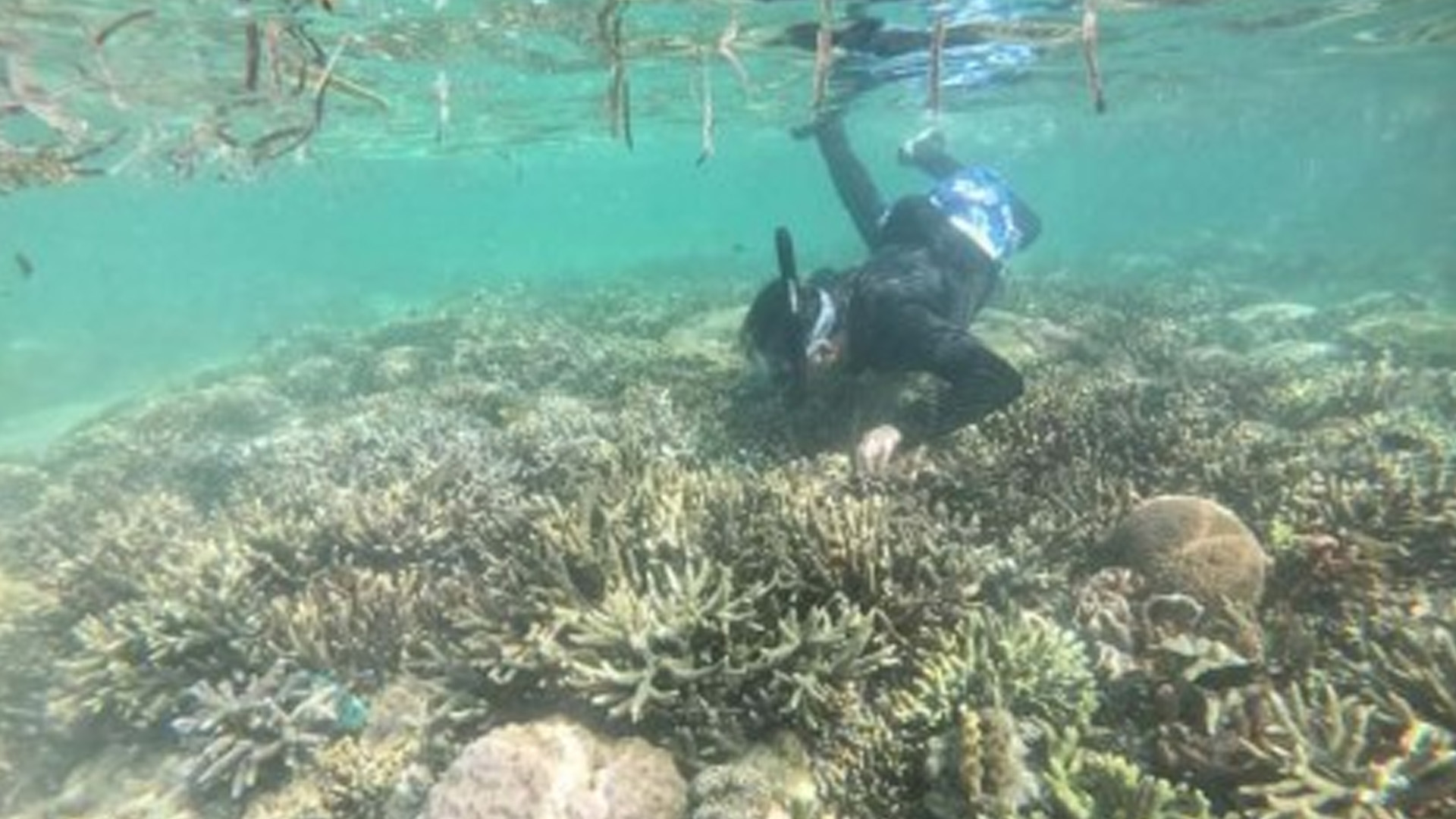Interestingly called the GC Ville, short for Giant Clam Village, the 9.7-hectare mollusks habitat adjacent to the famous Lakawon Island Resort highlights the marine conservation initiatives of Cadiz City in Negros Occidental.
As of July, it is home to about 2,718 giant clams, considered as endangered species, after more than three years of spawning.
Declared a marine reserve by the City Council, the GC Ville is considered as among the inspiring stories in the northern Negros city that came out of the coronavirus disease 2019 (Covid-19) pandemic lockdown in 2020.
Main caretaker Hereliza “Yhen” Osorio considers her team’s achievement to have nurtured the GC Ville to what it has become today, a showcase of marine care unique to Cadiz City.
“We are happy that we are able to expand and continue to protect GC Ville,” she said in an interview on Saturday.
The name of the marine reserve can also be a reference to a popular Filipino movie and television character, a young mermaid called “Dyesebel.”
Osorio, 37, shared that in 2019, months before tourism was put to a halt by the pandemic, she and her friends, all of them resort employees, gathered seashells as a pastime, and in one of their outings, she found three giant clams.
She became fond of them and decided to take care of the mollusks. Back then, she didn’t even know what kind of shells they were.
“I just collected them. They were multiplying. They have different colors. I was happy when I saw them,” Osorio said.
In March 2020, the pandemic struck, resulting in the closure of Lakawon Island Resort, making her decide to return home to Sara, Iloilo.
Thinking about the giant clams, she approached the Office of the City Agriculturist (OCAG), which also saw the importance of preserving the giant clams and rehabilitating the marine area.
When the OCAG decided to take in the giant clams, its head Enrique Escares III asked Osorio to be the caretaker.
Without any background in marine conservation, but with love and passion to conserve and protect the giant clams, Osorio accepted the challenge and stayed on the island.
Poised as the city’s next major ecotourism attraction, GC Ville is so close to Osorio’s heart that she practically knows every nook and cranny of the massive marine conservation area.
The GC Ville has “streets,” one of them named after Mayor Salvador Escalante Jr., who himself advocates raising awareness to preserve and protect the marine environment through GC Ville.
“There is nothing like this in other parts of the country, so far,” he said.
GC Ville is populated with four species of giant clams – the Tridacna squamosa, or the fluted giant clam; Tridacna crocea, or the boring giant clam; Tridacna maxima, or the small giant clam; and Hippopus hippopus or the Horse Hoof clam.
They come in vibrant blue, green, and orange from the symbiotic algae living in their tissues.
In GC Ville, the largest mollusk is a Horse Hoof clam, which is 33.5 cm. or 13 inches, and belongs to the Hippopus hippopus species.
Research shows that the majority of giant clams across the world usually have a shell length of 40 cm. to 50 cm., while some are at least 15 cm.
With her team, Osorio, who became a regular employee of the OCAG earlier this month, snorkels and dives to check GC Ville almost every day as the weather permits.
“The 2,718 mollusks are only giant clams, there are still baby clams in the area. Once we find the juveniles, we put buoys to protect them,” she said.
OCAG aquaculturist Ressa Deldo-Tabigo-on said being endangered species, giant clams need to be protected, noting that they continue to determine if there are more of these in other areas of Cadiz City.
According to Endangered Species International, giant clams serve as filter feeders, cleaning the water of pollutants as they ingest algae or plankton.
“Fishing or taking of rare, threatened, or endangered species” is prohibited under Republic Act 10654 or “An Act to Prevent, Deter and Eliminate Illegal, Unreported and Unregulated Fishing.”
When El Niño brought extreme heat to Negros Occidental early this year, several giant clams beached along with the corals, and even died due to the excessively warm water, Osorio said.
“We couldn’t do anything about it, but we regularly monitored the GC Ville. Most of the clams survived,” she added.
Although GC Ville has not been formally opened as an ecotourism site, select groups, including guests of the mayor, some government officials, and a group from the local media, have visited a part of the area on a glass-bottom boat to see its colorful inhabitants.
“GC Ville is becoming popular and more people are now aware that giant clams are an endangered species. I hope it will become a major attraction and we can sustain our protection and conservation campaign,” Osorio said. (PNA)







